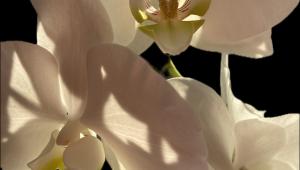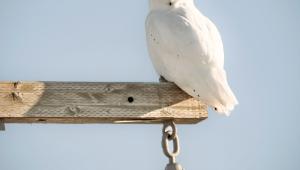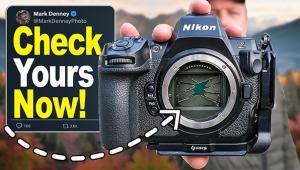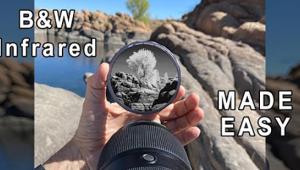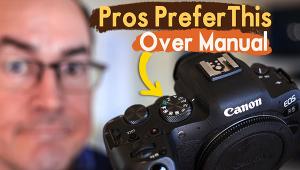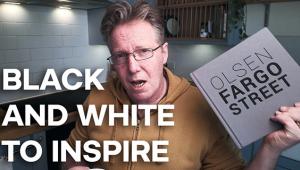Digital Help
Q&A For Digital Photography
Digital Help is designed to aid you in getting the most from your digital photography,
printing, scanning, and image creation. Each month, David Brooks provides solutions
to problems you might encounter with matters such as color calibration and management,
digital printer and scanner settings, and working with digital photographic
images with many different kinds of cameras and software. All questions sent
to him will be answered with the most appropriate information he can access
and provide. However, not all questions and answers will appear in this department.
Readers can send questions to David Brooks addressed to Shutterbug magazine,
through the Shutterbug website (www.shutterbug.com), directly via e-mail to:
editorial@shutterbug.com
or goofotografx@gmail.com
or by US Mail to: David Brooks, PO Box 2830, Lompoc, CA 93438.
Easy 35mm Film Scanning?
Q. I am an amateur photographer and I like to enter local contests and display
prints in my home. I have several hundred 35mm slides that I would like to scan,
but scanning services are expensive. I have used a friend's Nikon 4000
in the past and while I find the quality of the scans quite good for the size
prints I typically make (up to 13x19), it is very time-consuming to scan a single
slide. I would like to reduce my time scanning old slides and I have been looking
at the Microtek ArtixScan 4000tf and the Epson Perfection V750-M Pro. My question:
Do you find the quality of a flat-bed like the V750 comparable to a Nikon 5000
or the ArtixScan 4000tf for the type of printing I do?
Matt DeZee
A. First of all, I must address your stated concern that scanning slides
is time-consuming. I have been doing it now for over 10 years and have thousands
of slides scanned from a lifetime of photography, and although I have gotten
more proficient with experience, it is still a relatively slow process. To obtain
an ideal image quality from each unique slide requires effort and skill. Making
the effort to adjust the values to produce a file that will make the best possible
print is the only way to achieve success. No scanner will make it easier or
faster. So if you don't want to invest the time and effort, use the money
to pay to have the scanning done.
In many ways the Epson Perfection V700 scanner is just about the best current
choice for scanning slides, and your 13x19 print size is well within the resolution
capabilities of the scanner. The Microtek ArtixScan 4000tf is a good scanner
but lacks auto cleaning of dust and scratches because it is really a rather
old design. I recently finished testing the Plustek OpticFilm 7200i scanner
that at $399 is a bargain, and has some advantageous features, including very
high scan resolution. See my review in the September 2007 issue of Shutterbug.
Image-Editing Software
Q. Reading your Digital Help in the June 2007 issue reminded me of a question
that I have been wanting to ask you.
The lack of the ability to quickly review and compare images at 1:1 in Bridge
1 and 2 creates a real logjam when I am processing a large number of images.
I tried the beta version of Lightroom. I did not like the idea of bringing my
images into the Lightroom library, sorting them, then moving to Photoshop to
adjust the selected images. I am so familiar with Photoshop that I never attempted
to do anything with the Developer module. I downloaded the beta version of CS3
onto the laptop. I don't know whether it was the beta version, but the
program ran extremely slow. I did like Bridge 3's features, perhaps the
marketed version would work more smoothly, what do you think? I was unable to
download a trial version of Aperture because my system did not meet minimal
requirements. What is the advantage(s) of either Lightroom or Aperture when
compared to Photoshop CS3? How does the print capabilities of either of the
two compare to that of Photoshop?
John Lewis
Chico, CA
A. What I said in the June issue of Shutterbug on both Lightroom and
Aperture continues to hold true. Unless you shoot great gobs of files in raw
neither provides much advantage over Bridge and Photoshop CS3. But because I
work with Macs more than Windows these days I find Aperture more congenial.
However, for raw processing, color correction, and editing to a printable file,
I personally use LaserSoft's SilverFast DC Pro almost exclusively. The
reason is that I have used SilverFast as my scanner driver for years, and familiarity
with it using the same tools to also handle digital camera raw files is a distinct
advantage. For more involved and special effects editing, as well as retouching
and restoration, I use Photoshop CS3 exclusively.
What Might Influence Camera Store Recommendations?
Q. Can you tell me if there is one of the new or upcoming flat-bed film scanners
that are as good or better than the existing Nikon CoolScan 9000 ED (for 35mm
and medium format film)? I know the flat-beds keep getting better but my camera
store still says the Nikon is much better because of the greater dynamic range
of 4.8. Is this true?
Is the discontinued Konica Minolta 5400 scanner still the best for 35mm? Are
they going to bring it back on the market? Also, from a previously answered
question you had about film scanners, one of your readers and yourself stated
in so many words that glassless is the best. Is this a big factor when one wants
the best out of their film scans?
David J. Kure
A. I have largely said all I can about what is possible when scanning
film with flat-bed scanners in my report on the Epson Perfection V750-M Pro
in Shutterbug. The article is on the Shutterbug website archives; go to www.shutterbug.com
and type "Epson V750-M Pro" in the Search box.
Of course your camera store will tell you the Nikon 9000 ED is better; they
make a large chunk of change every time they sell one, and perhaps very little
selling an Epson Perfection V750-M Pro in comparison.
The highest reversal film density range is 3.2 or 3.3, so any scanner with a
dynamic range greater than that will capture all of the information in a scan
of film. And if you also scan negatives, which are less than half that density
range, a very high dynamic range like 4.8 is a distinct disadvantage. Far more
important in my experience is that a film scanner has an optical resolution
above 5000. The higher the better to preclude pattern interference with grain,
which is common with 4000dpi scanners like the Nikon, producing an exaggerated
grain effect in scans with some films.
Sony, since it bought the photo product assets of Konica Minolta, has not revealed
one way or another if they have any plans for the Konica Minolta scanner line.
However, they do continue to provide parts and repair.
Glassless flat-bed scanning does have some advantages mostly in terms of less
dust and dirt, but the addition of Digital ICE pretty well eliminates that disadvantage.
Microtek is slated to offer a new ArtixScan M1 scanner that may provide some
performance advantages that has glassless film scanning, but so far it has not
been released for sale.
ANNOUNCEMENT
I am pleased to announce a new Bonus Edition adding five chapters to my eBook
DIGITAL DARKROOM RESOURCE CD. The CD now contains 21 chapters totaling 266 pages
in Adobe Acrobat .PDF format, providing easy-to-read text and large high-quality
illustration. The CD is available for $20 plus $2 shipping and handling (US
Mail if available). Ordering is as simple as sending a check or money order
for $22 made out to me, David B. Brooks, and mailed to PO Box 2830, Lompoc,
CA 93438.
- Log in or register to post comments














